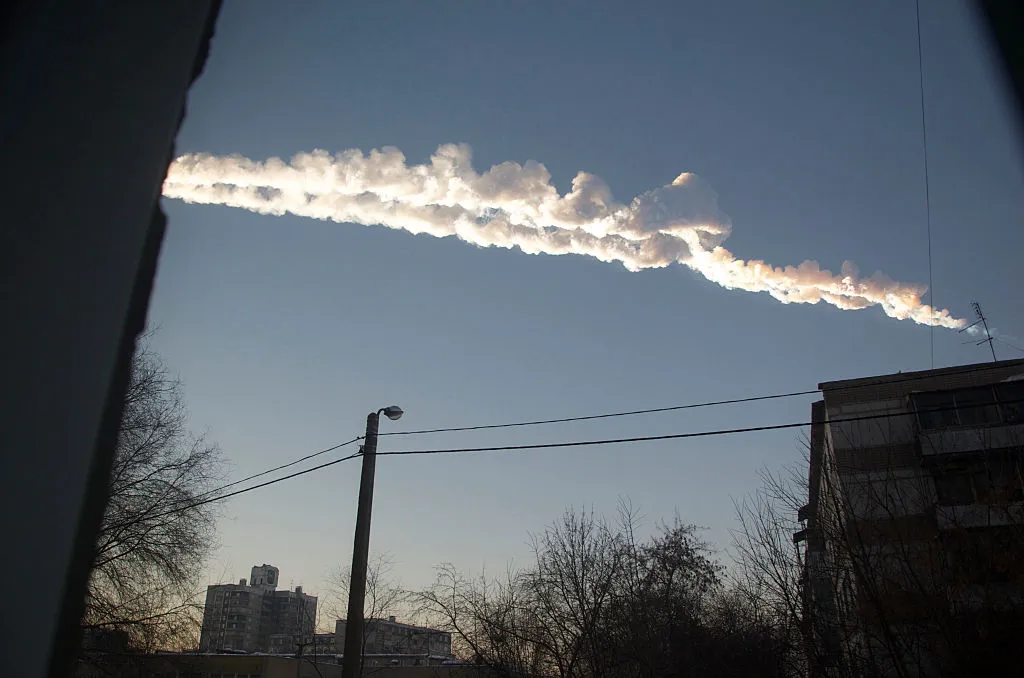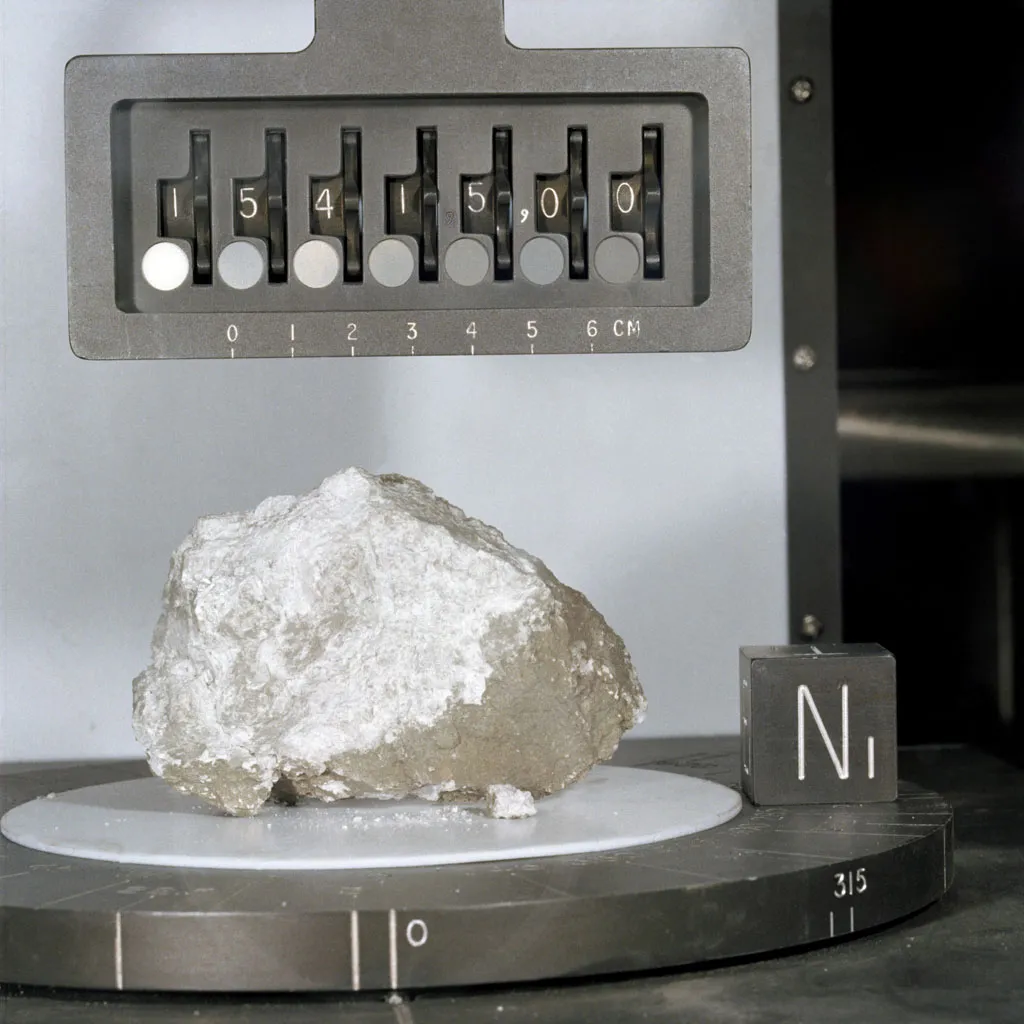The destruction of Earth has become a staple diet of tabloid news and Hollywood.
The stories are irresistibly dramatic – life on Earth faces threats as varied as asteroid impacts, alien viruses, eruptions from the Sun and even the violent death of a massive star.
Each hazard arrives on our cosmic doorstep with its own set of apocalyptic accompaniments, from enormous tidal waves to fatal doses of radiation and the destruction of our technological infrastructure.
You’d be forgiven for becoming indifferent to these catastrophes, but what’s the real astronomy behind them?
What are the actual risks that these phenomena could do some serious harm to mankind?
Is it time to start stockpiling canned food and building a bunker, or can we safely ignore them?
Killer asteroids

Of all the threats to Earth from space, an asteroid impact is perhaps the one that has most infused the popular psyche.
Countless movies have drilled into us that a behemoth of an asteroid can sneak up on Earth to wreak untold damage.
The reality, though, is that impacts of very large asteroids are rare.
"We have found about 95% of the near-Earth asteroids larger than 1km, and none of them represents a threat," says Donald Yeomans, manager of NASA’s Near-Earth Object Program Office at the Jet Propulsion Laboratory.
"It is just possible that there will be a threatening object within the remaining 5%, but it seems very unlikely that a large threatening object could take us by surprise without several years of advanced warning."

Additionally, by looking at orbital predictions for the next 100 years, NASA is currently keeping tabs on the impact risk of nearly 300 near-Earth asteroids.
As more asteroids are discovered by surveys, their orbits are predicted and refined and the risk (if any) of impact can be calculated.
In recent years, the search has been extended in an effort to discover 90% of the near-Earth objects larger than 140m in diameter, while regular sky surveys look for even smaller spacerocks to find them ahead of time and provide some interval of warning.
Yet while it’s unlikely that large space rocks can sneak up on us, much smaller asteroids do occasionally enter Earth’s atmosphere at short notice.
On 15 February 2013, an asteroid exploded over the town of Chelyabinsk in Russia, releasing around 440,000 tonnes of TNT worth of energy – over 30 times the bomb dropped on Hiroshima – into the atmosphere.
The resulting shockwave was strong enough to blow out people off their feet, break windows and set off car alarms.
The initial space rock is thought to have been around 20 m in diameter.
Such large events are expected to occur once every 50 to 100 years – all the more reason to keep our eyes peeled for the big ones!
How likely is it?
It may be the stuff of movies but we’ll probably be holidaying on Mars before a large, 50m plus asteroid hits the Earth.
Explosive supernova

The Earth would be bathed in high energy radiation if a supernova went off in our vicinity.
Back in 1054, observers in China (and very likely North America too) witnessed a spectacular astronomical event in their night skies.
In the pre-dawn darkness of 4 July, eyewitnesses spotted a brilliant light emanating from near the star Zeta Tauri.
Accounts written by Chinese astronomers recall how it blazed a brilliant red-white with sparkling ‘rays’.
Shining with a brightness four times that of Venus, the ‘star’ remained visible in the daytime sky for over three weeks.
What had been seen was an epic explosion of radiation and stellar material called a supernova.
It was the supernova of 1054 that created the deep-sky object we know today as the Crab Nebula.

Thankfully for Earth, the star that went supernova was roughly 6,500 lightyears distant. But what if it had been much closer?
Calculations made by scientist Michael Richmond suggest that an event of the kind that created the Crab Nebula (known as a ‘Type II’ or ‘core-collapse’ supernova) would only pose a danger to Earth if it was less than 33 lightyears away.
However, Richmond’s calculations also hint that a Type Ia or ‘thermonuclear’ supernova could be more distant and still potentially endanger us.
US astronomers led by Edward Sion suggested that the variable star T Pyxidis might create a Type Ia supernova that could endanger the Earth with a dose of deadly gamma-rays equal to 1,000 solar flares going off simultaneously.

But others are more sceptical, arguing that because it is 3,260 lightyears away it wouldn’t pose a threat to us.
If a very nearby supernova were to go off, it could damage the Earth’s upper atmosphere with a barrage of radiation, including the ozone layer.
This could cause radiation sickness, and worse, to some of us on the ground (astronauts could be in even more danger).
Luckily, we may not have to worry. With no apparent supernova progenitor stars in our neck of the woods, Richmond believes the likelihood of such an event happening is “almost zero”.
How likely is it?
Given that there don’t seem to be any supernova progenitors nearby, we reckon this one is more damp squib than deadly danger.
Deadly solar flares

Will Earth’s magnetosphere be able to protect us from a massive solar flare erupting from the Sun?
Our Sun, though seemingly a placid presence in our daytime skies, is in fact capable of almighty stellar outbursts known as ‘solar flares’.
These huge solar explosions erupt from ‘active regions’ on the Sun’s surface where magnetic field lines twist and turn with pent-up energy.
In 1989, a powerful solar flare knocked out electricity grids in Canada, creating a blackout that lasted for nine hours.
But what risk would a solar flare pose to humans?

"We’re well protected by the Earth’s magnetosphere. The effects to humans of a powerful solar flare reaching the Earth would be minimal," says Alysha Reinard from the National Oceanic and Atmospheric Administration’s Space Weather Prediction Center.
"The main effects would be on our technology. Radiation from solar flares causes the upper layer of our atmosphere to expand.
"This can increase atmospheric drag on satellites and, in particular, affect the accuracy of GPS signals."
While a solar flare might not kill you outright, there’s a chance it could damage telecommunications as well as air traffic control equipment, electricity grids and other electronic systems that society relies upon.
Thankfully, Reinard and her colleagues have been working on ways to predict the location and, significantly, the size of solar flares.
"We’ve learnt that strong twisting [of magnetic fields] occurs below the surface of an active region two to three days before a flare occurs."

Crucially, astronauts may also be threatened by solar flares, especially the charged particles that the flares accelerate through space.
In the period between the Apollo 16 and 17 missions, a huge solar flare erupted.
"It’s estimated that an astronaut on the Moon at that time would have absorbed 400 rem [a unit of radiation dosage]. A dose of 300 rem or more is considered potentially deadly," says Reinard.
"The real danger would be if a flare occurred while an astronaut was on a spacewalk."
On the ground we may be safe from a large solar flare, but it may be a different story for those exploring the Solar System in the future.
How likely is it?
The biggest solar flares occur about once every 10 years, but they can be quite random.
They would probably not be harmful, but understanding when they erupt will be crucial for sending astronauts out into the Solar System.
Extraterrestrial viruses

When the Apollo astronauts returned from the Moon, they didn’t just bring home tales of their daring escapades and a bunch of incredible photos.
Hitching a ride with them back to Earth were sealed metal boxes containing precious Moon rocks.
It was realised early on that studying these unique samples wouldn’t simply be a case of prizing open the box and seeing what had been collected.
The study of Moon rocks would require incredible care and a huge amount of preparation, for two primary reasons.
If there was anything biologically interesting on, or in, them, it would be imperative to preserve and protect it from contamination.

The second reason, and perhaps more important to the majority of life on Earth, was the risk to the planet from extraterrestrial contaminants.
What would happen, the scientists thought, if an alien microbe were to be let loose on Earth, where there was no resistance to its potential effects?
To address these issues, NASA built the Lunar Receiving Laboratory, a specially designed building complex capable of storing and quarantining Moon rocks and the astronauts themselves.
During their stays on the Moon, the Apollo astronauts had been living in a spacecraft liberally sprinkled with lunar dust from their moonwalks.
So before the Apollo 11 crew were allowed out of the Lunar Receiving Laboratory, various animals including mice, cockroaches and fish were given food laced with Moon dust to see if they would keel over.
None of them did, so after 16 days the crew was free to leave the quarantined laboratory.
The Apollo crew quarantine restrictions were lifted from the Apollo 15 mission onwards and the lunar samples are still protected today (for their own sake now) at the Johnson Space Center in Houston, Texas.
In recent years, both the Japanese Hayabusa 2 and NASA’s OSIRIS-Rex missions returned samples of asteroids to Earth.
Both had their own specially built receiving labs where they could be opened without risk of contamination in either direction, but as asteroids are deemed dead worlds there was no real danger of an alien outbreak.

Things will be very different when the samples currently being collected by the Perseverance rover on Mars arrive back on Earth in the coming decades.
Even though the chance of a living microorganism surviving the journey is extremely low, the samples will be put through the most stringent quarantine procedures usually reserved for treating diseases such as ebola.
How likely is it?
With scientists already aware of what is needed to safely bring home and store the spoils from a sample-return mission, we reckon there’s not much chance of this one happening.
Have we missed any? What do you think are the biggest threats to Earth from space? Let us know by emailing contactus@skyatnightmagazine.com

